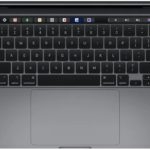Have you ever sat through a video that just dragged on and on? Or perhaps have included unnecessary footage, such as you eating a burger or snoring while sleeping? Do you have elements in the video that do not contribute to the storytelling? Worse, they get into the flow of the narrative.
Here’s some good news: you do not have to bear with them (and the embarrassment). You can now use a video cutter to trim videos.
That’s not all. This article shares some of the best trimming video techniques to make your work more professional. You will also learn good tips on how to choose an online video cutter to use.
Are you ready? Read below!
1. Plan the Story
What do you want to convey in your video? Better yet, what story do you have in mind? The video might be about a product launch, a travel experience, or an educational lecture.
Either way, having a narrative before trimming the video offers many benefits. These include:
- Creating an accurate timeline of events
- Making sure every element in the video is relevant to the story
- Keeping track of what footage you will be keeping and discarding
In other words, doing this ensures you do not lose the essence of your work while editing and use your time and tools more efficiently.
But how do you plan your story for the video? Here are some ideas:
- Outline the plot points in a list and plot them out visually with a storyboard.
- Create a spreadsheet with columns that include footage details such as length, purpose, and description.
- Organize your video clips according to their relevance to the narrative or sequence of events.
- Brainstorm with your team (if you have one) to create a clear story.
- If this is for a client, know their objectives.
2. Select the Right Video Cutter
Once you already know the story, you can think about the tools you need. Fortunately, you have plenty of options. For example, you can get a video cutter online, which has many advantages. It:
- Saves you from the trouble of downloading cumbersome software, which can consume considerable storage space.
- Allows you to quickly trim your videos to your desired length without losing their overall quality.
- Lets you work on your videos on the go as long as you have an Internet access
You can even find a free video trimmer with excellent features to edit your project without breaking the bank.
However, not all choices are great. To avoid dealing with a substandard video cutter, here are some tips:
- Look for ones with advanced and intuitive features. These include trim, crop, split, or merge videos.
- Check out user reviews and ratings for your top picks. Doing so can help you identify potential issues with the video cutter before using it.
- Explore the online video cutter’s website and see if they have a helpful FAQ page or tutorials.
- Make sure the program you choose can support your chosen file format. Consider what kind of videos you intend to edit.
3. Know the Basic Video Trimming Techniques
You can trim (or shorten a video) in many different ways. While the actual editing you can do can vary depending on many factors, such as the tool you are using, most platforms let you do the following:
- Cutting, which involves cutting out parts of the video you do not need. It is useful when you want to create a shorter version of your clip but keep its original content.
- Splicing, which lets you join two or more clips together seamlessly. It is perfect for when you want to create a longer clip from multiple shots.
- Cropping, which is removing unwanted elements from your videos such as logos or backgrounds. It helps you focus on the important parts of your video and make it more visually appealing.
Other specific video trimming techniques are:
- Ripple edit. It removes a selected portion of your video clip and automatically closes the gap in the timeline.
- Razor tool. It cuts a selected clip into two segments, allowing you to remove the unwanted portion.
- Split edit. It is a technique used in film or video editing where a clip’s audio and video portions are adjusted at different times during the transition from one shot to another. This means that the audio from the previous shot may continue to play while the visual content of the next is already visible or vice versa.
- Slip Edit. This technique allows you to adjust a clip’s in and out points without affecting the overall length. For example, you have a clip of a singer performing a song and want to align the clip’s start and end points with the musical beats.
Video trimming helps you achieve professional-looking videos that engage and captivate your target audience. But it takes a well-considered story arc and knowledge of basic cutting techniques to make it truly effective.
You also need the right tool. Wave.video is a highly efficient and easy-to-use free video cutter for marketers due to its advanced features, intuitive user interface, and support for various file formats.
Whether you are in the social media marketing game, involved in content creation, or own a small business, wave.video can elevate your editing skills to new heights.







